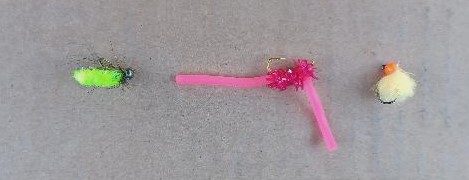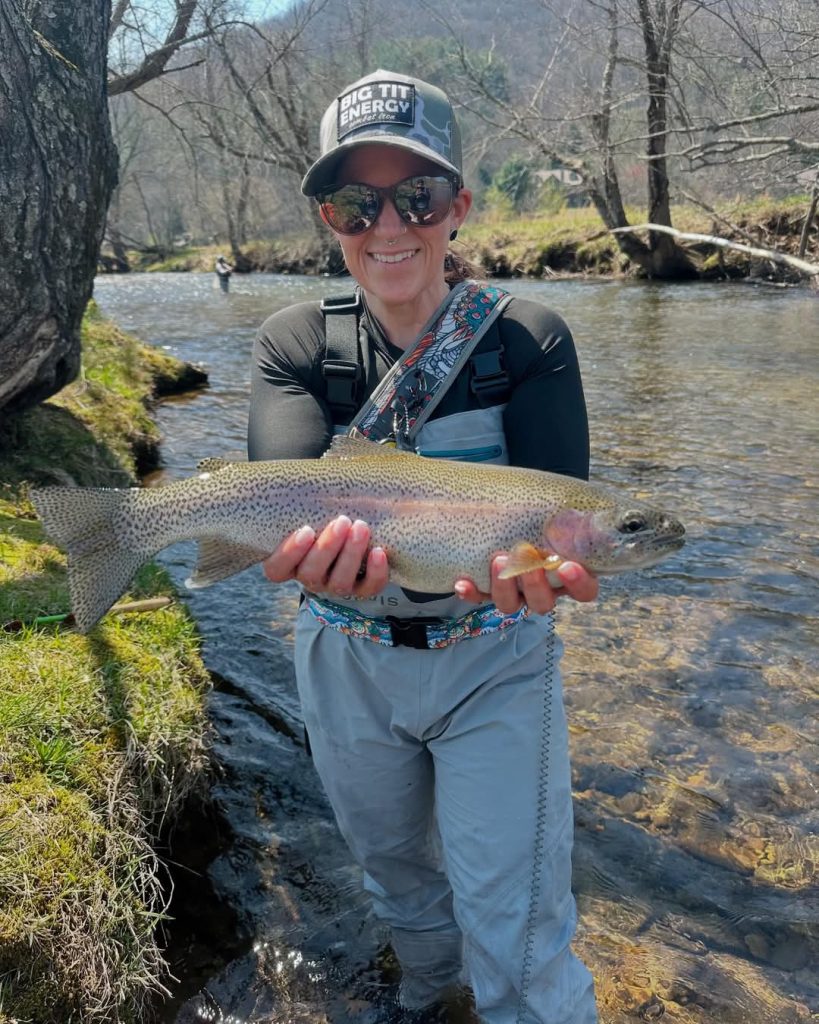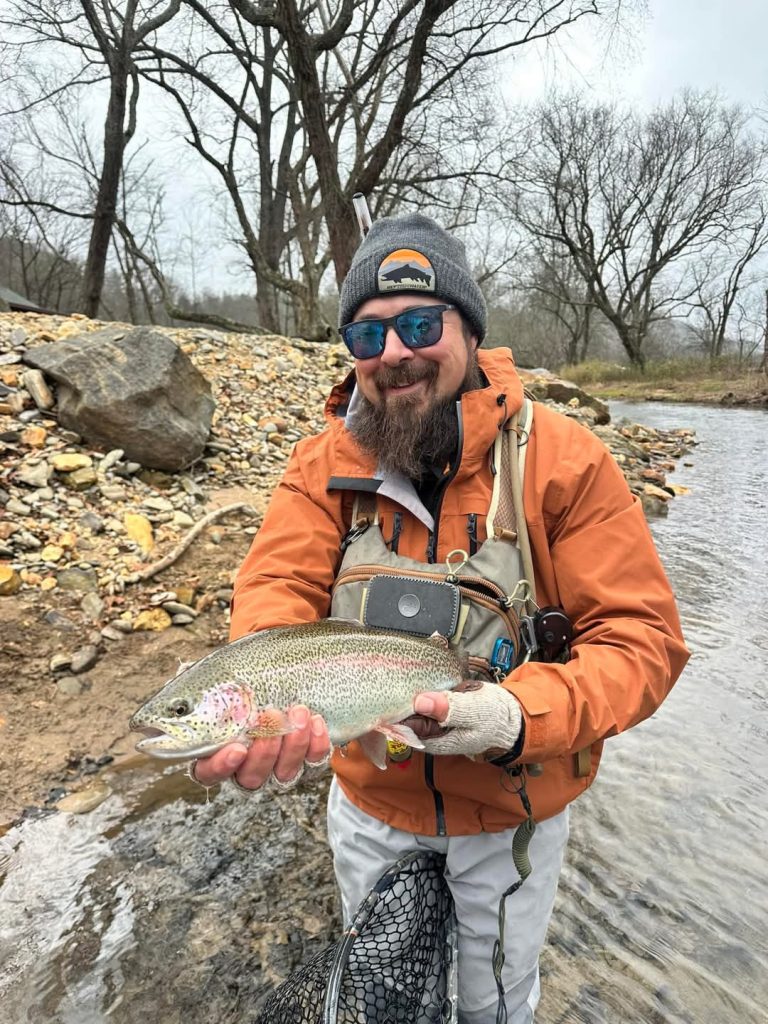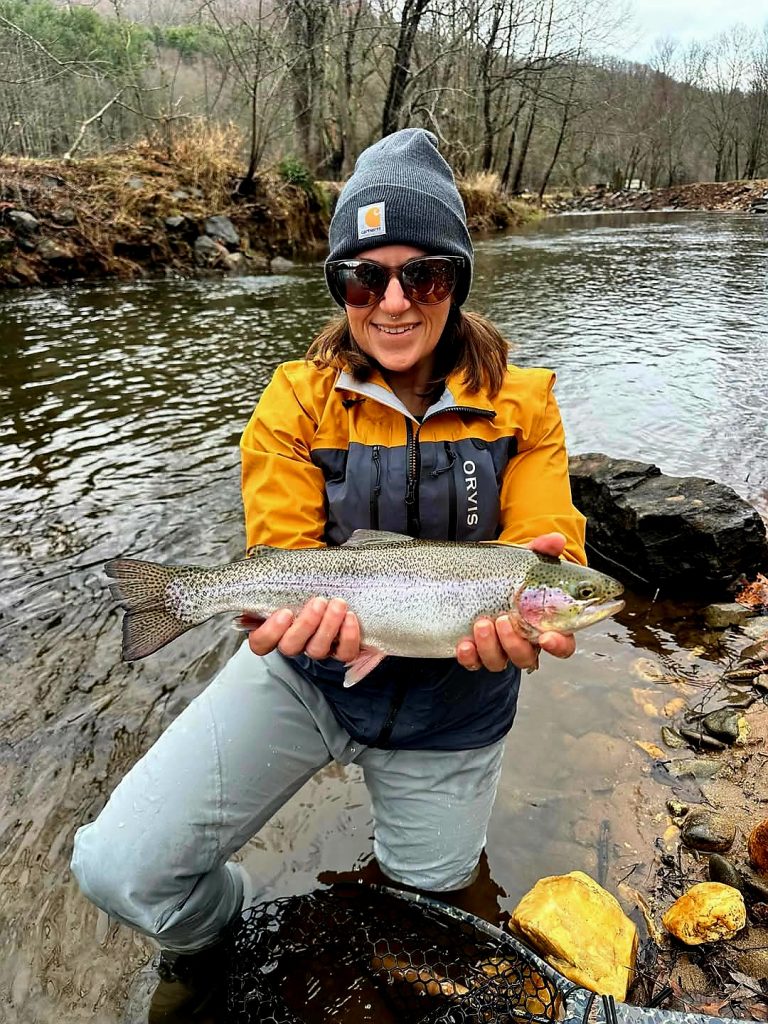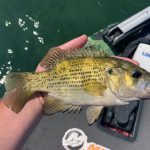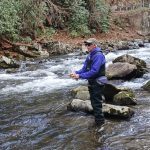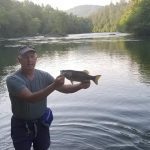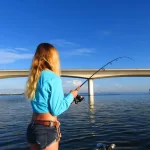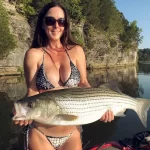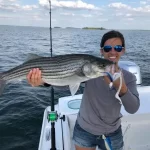Top 3 junk flies for trout fishing in western North Carolina
This article will cover the top 3 junk flies for fishing in western North Carolina. The term “junk fly” comes from the fact that these flies really are for stocked trout. For the most part, they are attractor flies, mimicking the food that they ate in hatcheries and really are not meant to copy a natural insect or other forage. Some purists find using junk flies distasteful. However, the trout gobble them up!
The top 3 junk flies for anglers trout fishing in western North Carolina are the squirmy wormie, mop fly, and egg pattern. All three are basically fished the same. The best approach in most situations is to fish them under a strike indicator. Anglers can present two flies at once with this rig, doubling the chance of hooking a trout and determining what they want that day.
Top 3 junk flies for trout fishing in North Carolina
These three flies; the squirmy wormie, mop fly, and egg fly, should be in the fly box of every North Carolina angler. I like the squirmy wormie in bright pink and size 14 to size 18. The mop fly top color is chartreuse followed by pink, in size 14 or 16. The egg pattern, which is my personal favorite, works best in tan or peach, I like tied on a #18 hook. Other sizes and colors will certainly produce, but these are my personal favorites that are proven to be effective.
Tackle and rigging for using junk flies
I use a 4wt and a 5wt for my trout fishing here in western North Carolina. The streams I fish range from medium to larger rivers. Therefore, the slightly heavier tackle is appropriate. Floating lines are all that is needed. I fish a 9 foot 6X leader. If I use a dropper, it will be 4 pound test leader material. All three flies have a bead head which helps get the fly down near the bottom. A tiny split shot can be used in needed.
A strike indicator is placed a few feet above the top fly. I like the small indicators that screw apart. These are easily adjusted when installed properly, having a slight amount of drag. The distance above the fly will be determined by depth and current. The idea is to have the fly or flies bouncing just off the bottom.
Best waters and technique for fishing junk flies
For the most part, the best type of water to use these junk flies is in the deeper runs and pools. They will snag the bottom in shallow riffles. As mentioned above, the depth can be easily set using the strike indicator. The best approach is to cast upstream or across, allow the flies to sink, and then drift through the hole or run naturally. A drag free drift is very important! Anglers will need to mend the line accordingly.
Often times, the trout will be found in the seam or an eddy. It is very important here to make sure the fly line does not get caught in the current, causing it to pull the fly unnaturally. When the indicator disappears below the surface, raise the rod tip briskly and come tight. Remember, light tippets are being utilized, so do not over do it on the hook set. Play the fish in as quickly as possible without horsing it, then release it quickly with as little handling as is practical.
Experienced anglers can certainly omit the strike indicator and dead drift a wormie, mop, or egg fly. In fact, on days when the trout are fussy, this is a good approach. Anglers will hang up, but may get more takes. The indicator does help suspend the fly at the proper depth and gives a visual indication of a take.
Junk flies can save the day when the water is stained or worse. These flies are all brightly colored and trout have a better chance to see them. Surprisingly, cold days are good choices as well. Insect life is all but gone and the fish will often take what is presented. This is a great situation to use an egg pattern.
In conclusion, this article on fishing junk flies will hopefully help anglers fly fishing for trout in western North Carolina (and all over) catch more fish!
